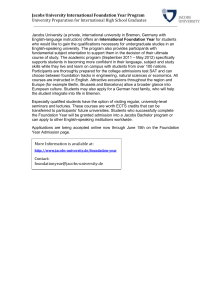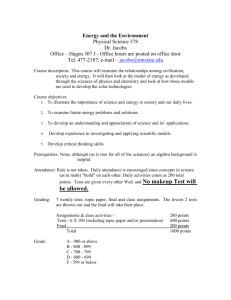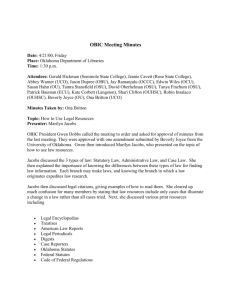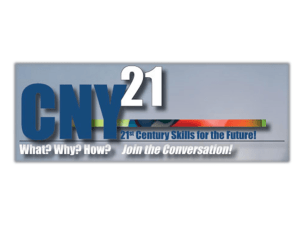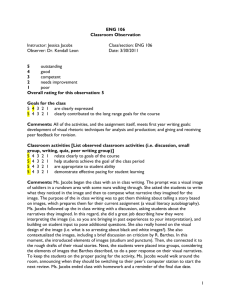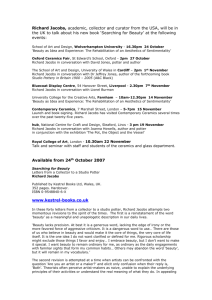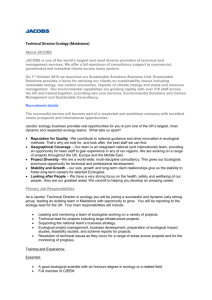Richard Jacobs - Interpreting Ceramics
advertisement
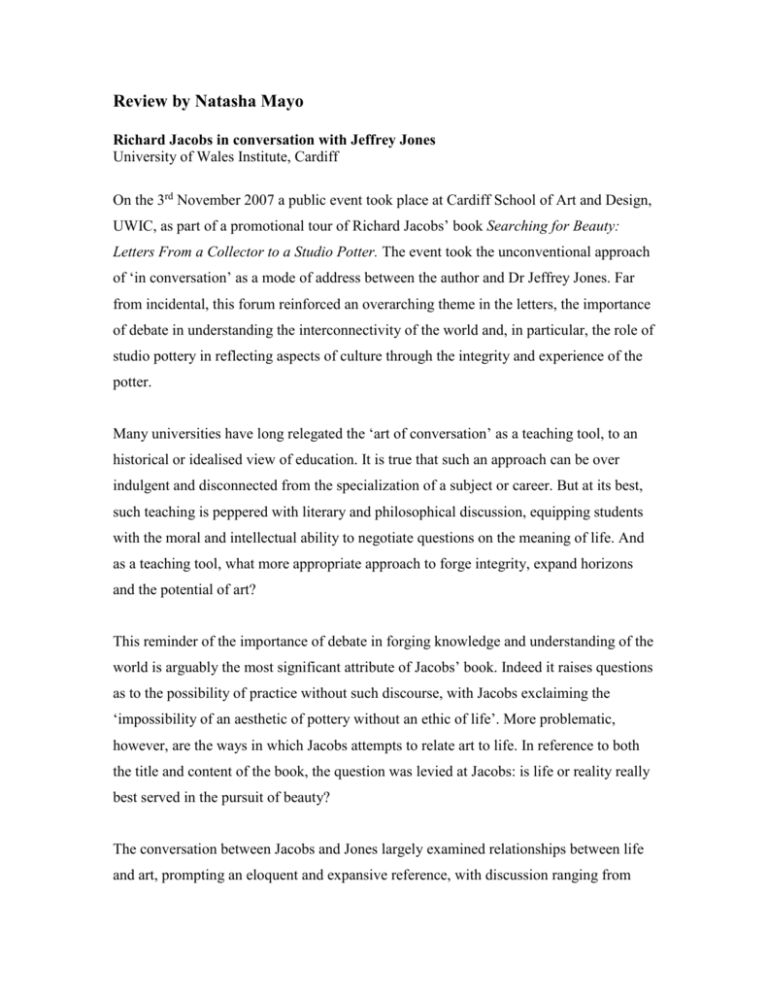
Review by Natasha Mayo Richard Jacobs in conversation with Jeffrey Jones University of Wales Institute, Cardiff On the 3rd November 2007 a public event took place at Cardiff School of Art and Design, UWIC, as part of a promotional tour of Richard Jacobs’ book Searching for Beauty: Letters From a Collector to a Studio Potter. The event took the unconventional approach of ‘in conversation’ as a mode of address between the author and Dr Jeffrey Jones. Far from incidental, this forum reinforced an overarching theme in the letters, the importance of debate in understanding the interconnectivity of the world and, in particular, the role of studio pottery in reflecting aspects of culture through the integrity and experience of the potter. Many universities have long relegated the ‘art of conversation’ as a teaching tool, to an historical or idealised view of education. It is true that such an approach can be over indulgent and disconnected from the specialization of a subject or career. But at its best, such teaching is peppered with literary and philosophical discussion, equipping students with the moral and intellectual ability to negotiate questions on the meaning of life. And as a teaching tool, what more appropriate approach to forge integrity, expand horizons and the potential of art? This reminder of the importance of debate in forging knowledge and understanding of the world is arguably the most significant attribute of Jacobs’ book. Indeed it raises questions as to the possibility of practice without such discourse, with Jacobs exclaiming the ‘impossibility of an aesthetic of pottery without an ethic of life’. More problematic, however, are the ways in which Jacobs attempts to relate art to life. In reference to both the title and content of the book, the question was levied at Jacobs: is life or reality really best served in the pursuit of beauty? The conversation between Jacobs and Jones largely examined relationships between life and art, prompting an eloquent and expansive reference, with discussion ranging from market values, personal integrity to relationships between individual effort and common purpose. It was also probing of Jacobs’ particular perspective, the point of view of an amateur collector with no experience of practice, art education or marketing. Jones raised the issue of sentimentality, challenging Jacobs by saying ‘isn’t writing letters a bit like making pots, a bit old fashioned, a bit reactionary, a bit futile?’ To which Jacobs replied that he is indeed guilty of ‘nostalgia for some pre-industrial communal world but that surely even those who believe tradition must be overthrown in order for a new art form to flourish, either consciously or unconsciously use tradition as their reference point for the new’. No definitive answers were given in response to criticisms of the book, no information given beyond its pages but something far more important was reasserted through the nature of this lecture, and it bears repeating. At worst, Jacobs’ book reflects an overindulgence in content or concept that bears little connection to its supposed equivalent or transformation into an art form but as a teaching tool, in forging understanding of studio pottery, what more appropriate example to forge integrity, and expand horizons than a far reaching and informed discussion of the potential of art?


